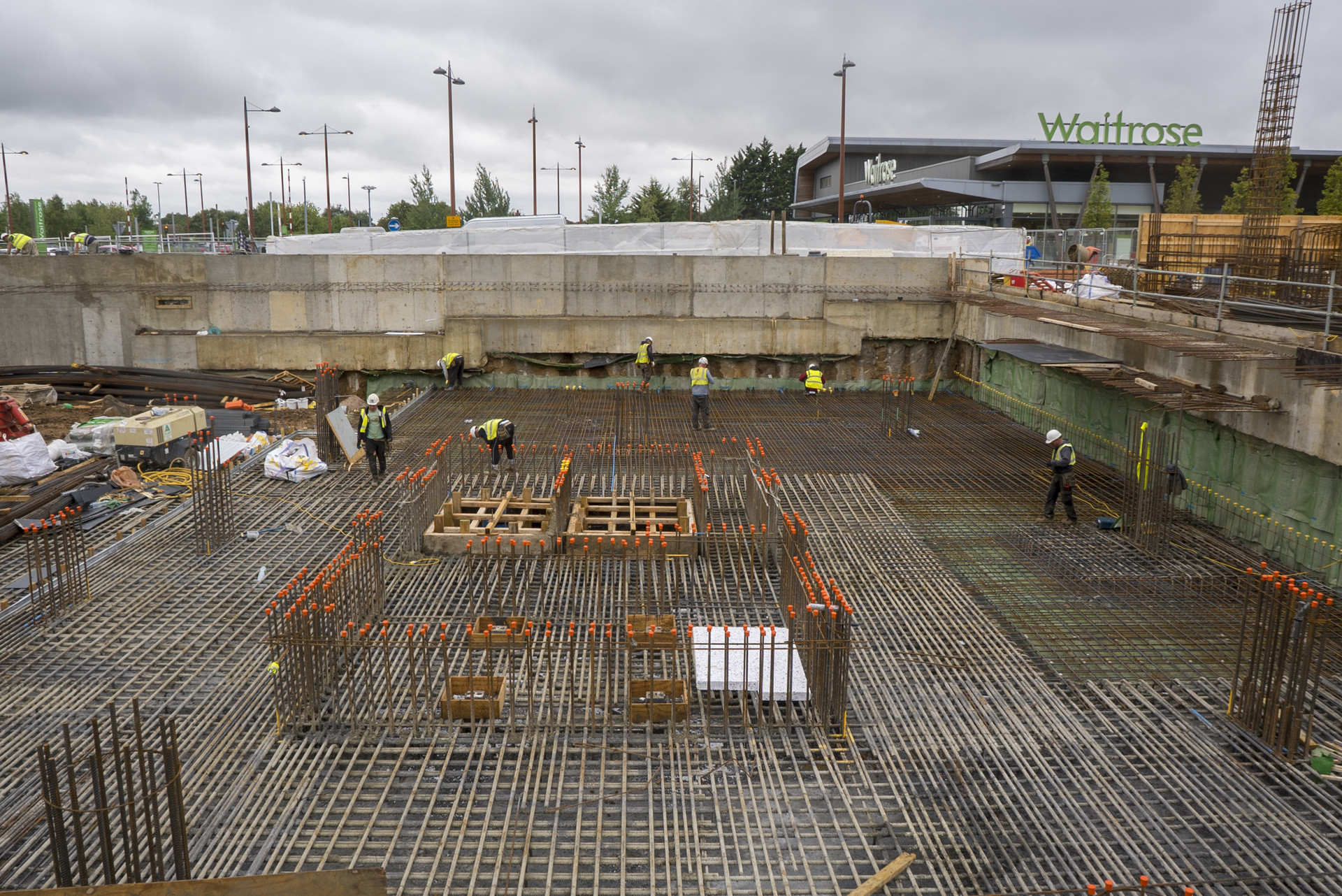 Winchester House
Winchester House Waterproofing is fundamental to building envelope design - get it wrong and the integrity of the entire building is at risk, with potentially catastrophic results. Here I discuss a couple of the most common problems with waterproofing basements and our best advice on developing a waterproofing strategy and design responsibility framework.
We often mention that it’s crucial for the project team to engage with us from the outset, to ensure that well proven and fully compatible systems are selected and properly installed. This is particularly the case when it comes to waterproofing basements, as it’s essential that overall ownership is taken of the, often complex, junctions between a basement and a podium level, for example.
A recent project involving complex junctions between the podium level and basement is Winchester House, a 19 storey residential development in Bracknell Town Centre. The project involved working closely with lead consultant Pure Structures in helping to specify and detail the waterproofing system for the extensive basement and podium areas. As well as supporting Comer Homes, the project contractor, to carry out the installation of RIW systems.
The waterproofing solutions specified included more than 3,000m2 of RIW Structureseal for behind the basement retaining walls and under the reinforced concrete slab. This versatile, self-healing, bentonite impregnated membrane was laid with overlapped joints across the blinded sub-base under the main basement slab. In addition, 750m2 of Flexiseal Pro was used to waterproof the podium deck and perimeter detailing such as the transition from foundations up to DPC level, overlapping Cementseal.
RIW Flexiseal Pro was chosen here for its ability to create a flexible interface over which other products from our range are lapped. Plus it can provide a fully bonded waterproof coating to concrete, masonry and other substrates.
A key element to consider when designing below ground waterproofing is how to provide continuity around foundation design and, in particular, piled foundations, which incorporate pile caps. Waterproofing pile caps and sealing around piles can often be achieved easily with RIW Structureseal, which would be fixed to the inside of the shuttering and dressed around the piles. However, for more complex foundation designs and tight programs, other methods should be explored.
With this in mind we have developed a time saving alternative that negates the need to protect the pile caps themselves. This is to use Cementseal, a liquid applied product, across the top of the pile caps and around the reinforcement followed by lapping Structureseal, an external tanking membrane, onto this horizontally. Allowing for the uninterrupted construction of the foundations prior to the process of applying the waterproofing.
This method of waterproofing is something that was also applied at Winchester House. Subsequently enabling Comer Homes to set out and pour the foundations in line with the tight programme deadline. Plus, a further benefit of using this method was that the different elements of waterproofing were able to happen in quick succession, enabling efficient inspections and a swift overall application.
This approach helps to ensure the delivery of a properly detailed and dry basement, able to meet all of the building owners or occupants’ ambitions for its operational use. For more information on the best waterproofing products for your basement project, get in touch with our technical team on 01753 944200.
 By Martin Radford, Business Manager at RIW Ltd.
By Martin Radford, Business Manager at RIW Ltd.



